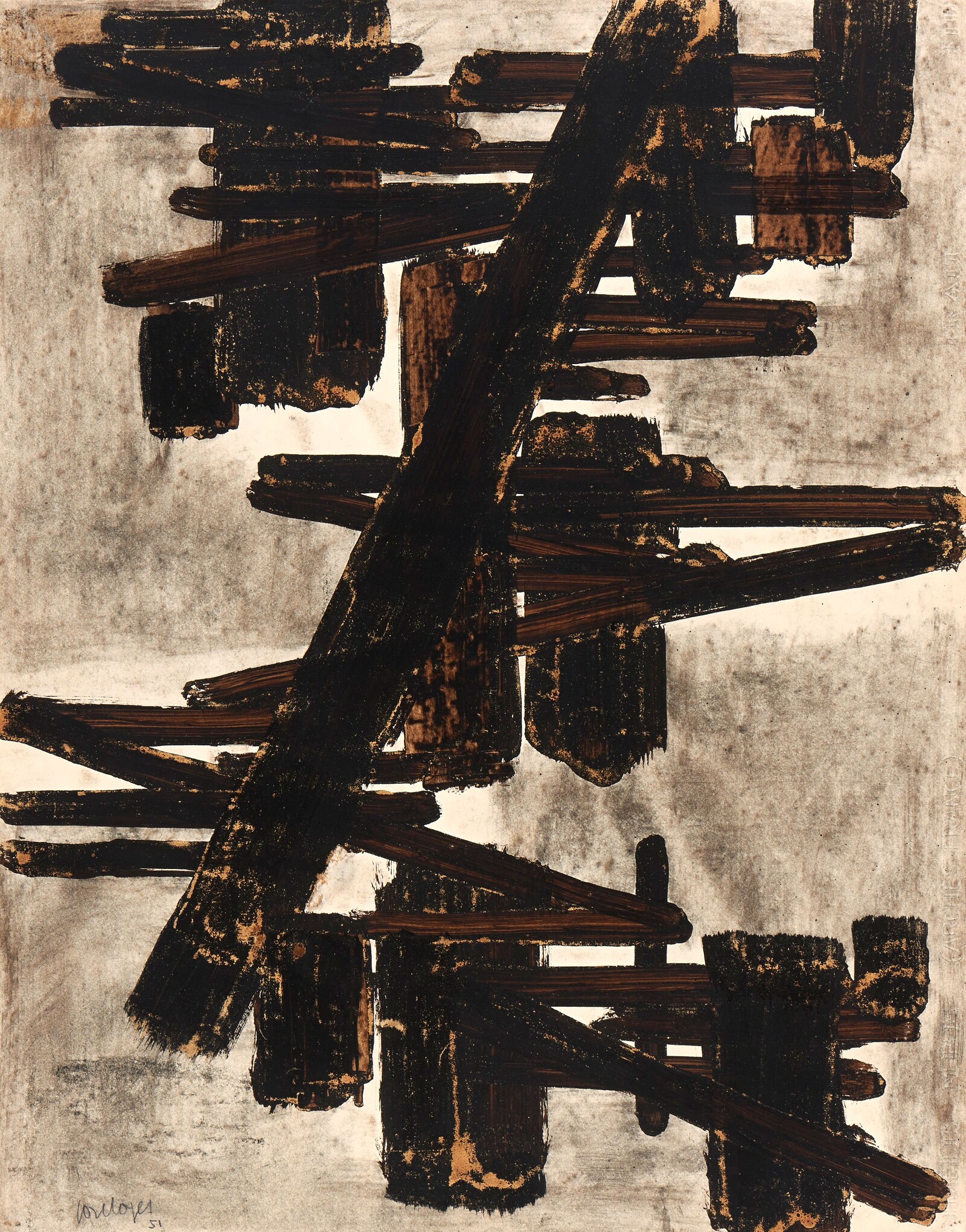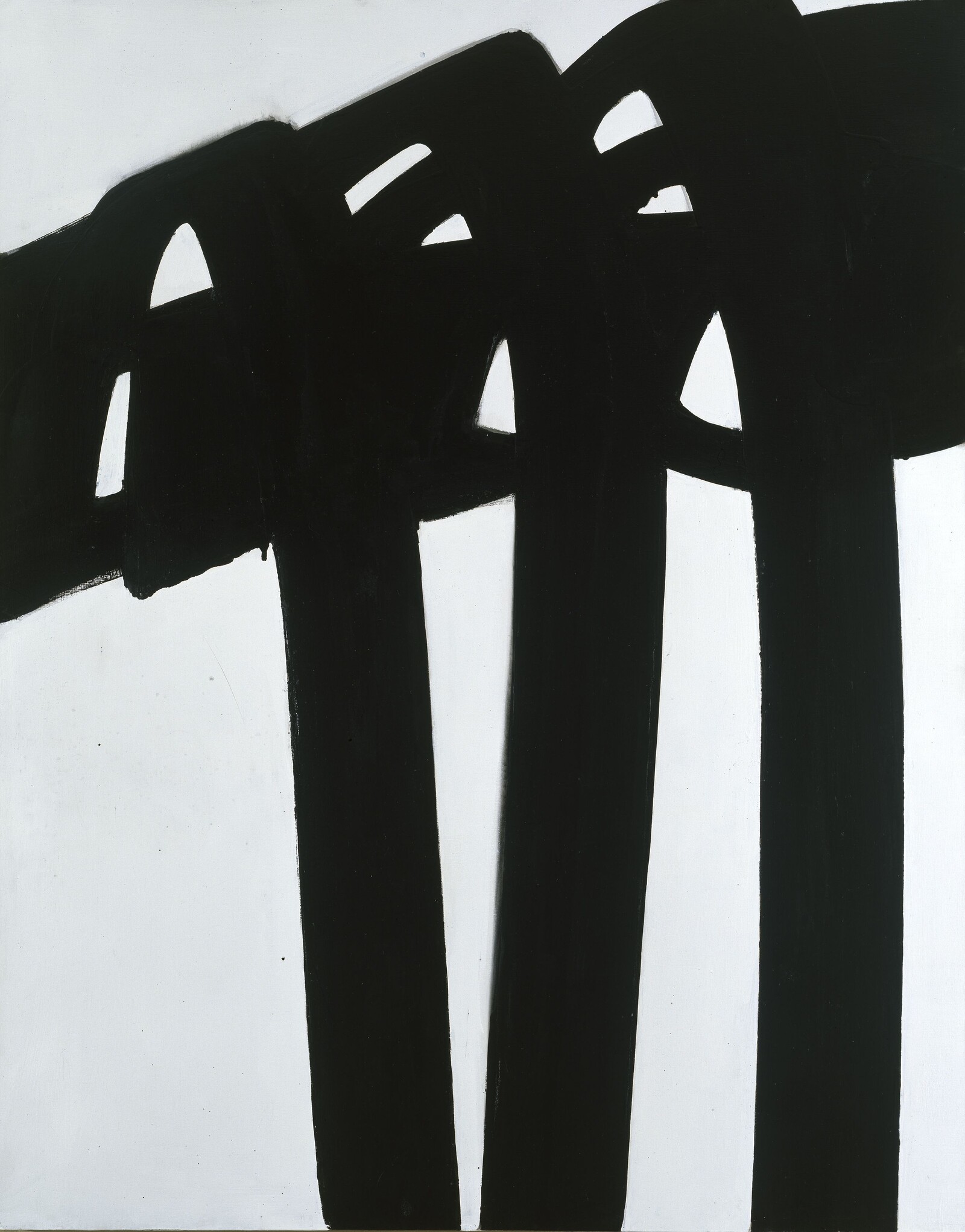Painting 1946-2019
October 17, 2020–February 28, 2021
Lichtentaler Allee 8 b
76530 Baden-Baden
Germany
Hours: Tuesday–Sunday 10am–6pm
T +49 7221 398980
office@museum-frieder-burda.de
Pierre Soulages is one of the outstanding personalities in 20th-century non-figurative painting and the best-known living artist in France. His work is indelibly inscribed on the history of contemporary art, from his early beginnings in the aftermath of the Second World War right up to the current day—a span of more than 70 years.
He is also a painter of the century in the literal sense. Born on December 24, 1919 in Rodez in southern France, Soulages celebrated his hundredth birthday in 2019 with an exclusive exhibition at the Louvre in Paris. His creative productivity, which has been marked from the very start by a radical artistic consciousness and a resilient, defiant stance, has withstood the forces of time and continues unabated, as his latest large-scale pictures, on show at the exhibition, amply demonstrate.
The retrospective exhibition of his work demonstrates the remarkable coherence with which his oeuvre developed—especially in view of the exceptional longevity of his creativity. Since his debut, Soulages has opted for total abstraction, questioning the traditional givens of classical painting. His position has been a unique one since 1948, and not just because of the materials (nut stain, tar) and tools he uses. He identifies his canvasses by means of technique, dimensions and date of realization rather than giving them a title that might influence the observer’s perception. In his own words, “A painting is comprehensively organized, an ensemble of shapes (lines, colored surfaces …) on which the meanings ascribed by the viewers are continuously being constructed and deconstructed”.
A collection of his early paintings on paper, including sumptuous nut stain paintings—hardly known outside France—illustrates Soulages’ own very personal interpretation of abstraction. These works from the years 1946-1948, which are seldom part of public collections, form the starting point of the show. It was in Germany, as Soulages has repeatedly insisted, that “everything began” for him. Indeed, his involvement in the traveling exhibition “French Abstract Painting” in 1948-49, of which he was the youngest participant, and the selection of one of his paintings for the billboard, were determining factors in the early fame garnered by his works. And there’s more. He was the only artist to take part in the first three editions of documenta in Kassel, in 1955, 1959 and 1964.
His creative period up to the late 1970s is characterized by large-scale pictures featuring pure black, black and white or black with discreet touches of color.
In 1979, Soulages embarked on a new phase of his work—a different kind of painting for which he proposed the neologism outrenoir, a style of painting “beyond black”. The rapport between dark and light is a constant in his painting experiments but with outrenoir, his painting demonstrated a multiplicity of light using a single color. In contrast to a monochrome work, “different textures, smooth, fibrous, calm, tense or agitated, which embrace or reject the light, give birth to gray blacks or deep blacks”. By painting over or scratching off or adding a single pigment, Soulages succeeded in bringing forth the light by contrasting brightness with darkness. One spectacular experience is created by monumental paintings that hang from the ceilings, seemingly floating in space.
The exhibition—curated by Alfred Pacquement and Udo Kittelmann—presents works from 1946 to this day. The light-flooded Museum Frieder Burda, the “white villa in the park,” built to designs by Richard Meier gives Pierre Soulages‘ paintings, on loan from numerous European museums and private collections, especially from the Museum Soulages in Rodez and the Centre Pompidou in Paris, the space to unfold a very special atmosphere.
An exhibition of Museum Frieder Burda and Kunstsammlungen Chemnitz.






